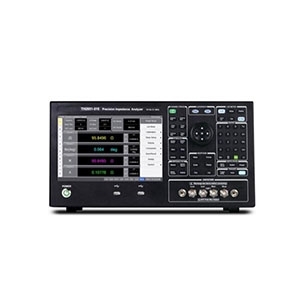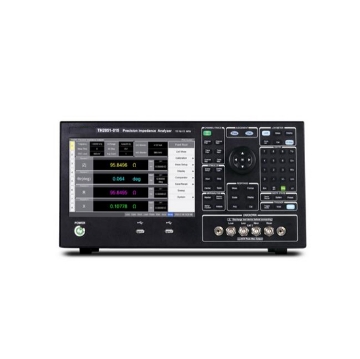Impedance Analyzers
Precision LCR Impedance Analyzer
Ultrasonic USB Impedance Analyzer
Impedance analyzers are essential instruments in the field of electronics and material science, designed to measure the electrical impedance of components, circuits, and materials. Impedance, a combination of resistance and reactance, is a critical parameter that defines how a component or material responds to an alternating current (AC) signal. By providing precise impedance measurements, impedance analyzers play a key role in evaluating the quality and performance of electronic components, assessing material properties, and optimizing circuit designs.
Working Principle of an Impedance Analyzer
The fundamental principle of an impedance analyzer is based on measuring the ratio of voltage to current across a device under test (DUT) and determining the phase angle between them. Here's how the process works:
- Signal Application: The impedance analyzer generates a known AC signal of a specified frequency and applies it to the DUT.
- Voltage and Current Measurement: The analyzer measures the voltage across and the current through the DUT. These values are used to calculate the impedance magnitude ∣Z∣, which is the ratio of the voltage to current: ∣Z∣=V/I
- Phase Difference Calculation: The analyzer measures the phase angle θ between the voltage and current. This phase shift helps determine whether the DUT behaves as a capacitive, inductive, or purely resistive component.
- Complex Impedance Determination: By combining the magnitude and phase information, the analyzer calculates the complex impedance Z=∣Z∣⋅ejθ, where θ is the phase angle.
- Frequency Sweep: Impedance analyzers perform frequency sweeps, testing the DUT at multiple frequencies. This provides a spectrum of impedance values across the chosen range, giving insights into the frequency-dependent behavior of the component or material.
Advantages of Impedance Analyzers
- High Precision: These instruments provide accurate and reliable impedance measurements over a wide range of frequencies, making them suitable for critical applications.
- Versatility: Impedance analyzers can measure a variety of electrical parameters, including resistance, capacitance, and inductance, making them a versatile tool in both electronics and material science.
- Broad Frequency Range: They offer frequency sweeps across a wide spectrum, allowing users to analyze the frequency-dependent behavior of components and materials.
- Comprehensive Analysis: By measuring both magnitude and phase of impedance, these analyzers provide a complete picture of how a component or material behaves under AC conditions. Automation and Data Logging: Many modern impedance analyzers come with automated measurement capabilities and data logging features, allowing for efficient testing and analysis of multiple devices.
Applications of Impedance Analyzers
- Component Testing: Impedance analyzers are widely used in electronics to test the characteristics of components like capacitors, inductors, transformers, and resistors. By analyzing impedance over a range of frequencies, engineers can verify component quality and behavior in different conditions.
- Material Characterization: In material science, impedance analyzers are employed to assess dielectric properties, conductivity, and permittivity of various materials. These properties are crucial in fields like semiconductors, polymers, and ceramics.
- Biomedical Applications: Impedance analysis plays a critical role in the biomedical field, especially in measuring tissue impedance and evaluating devices like electrodes and sensors. Impedance spectroscopy helps in understanding the electrical properties of biological tissues, leading to advancements in medical diagnostics.
- Circuit Design and Optimization: Impedance analyzers help in designing and optimizing circuits, especially high-frequency circuits like filters, amplifiers, and oscillators. By understanding the impedance behavior of components, designers can ensure efficient circuit performance.
- Energy Storage and Batteries: In the energy sector, impedance analyzers are used to evaluate the performance of energy storage devices such as batteries and capacitors. Impedance measurement helps in assessing the health, efficiency, and longevity of these devices.
- Research and Development: Impedance analyzers are invaluable tools in R&D labs where new materials, devices, and components are being developed. They provide insights into the electrical behavior of innovations, aiding in the improvement and optimization of designs.



